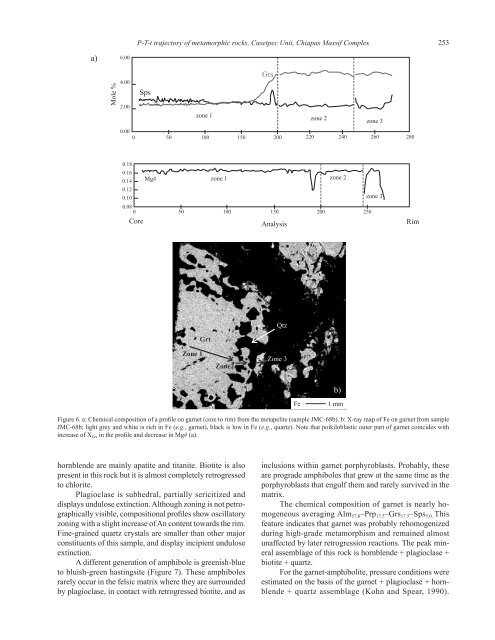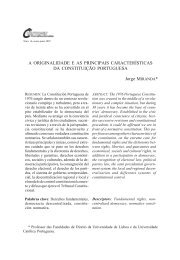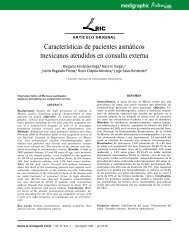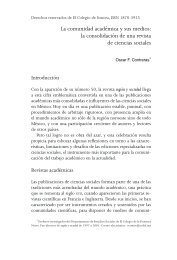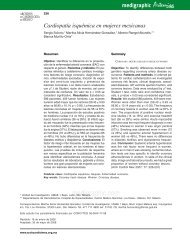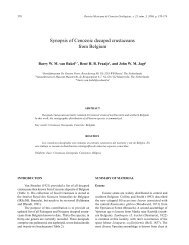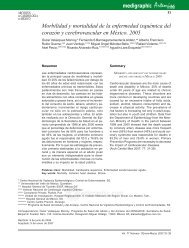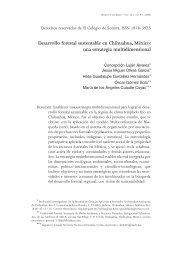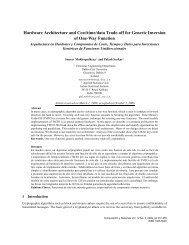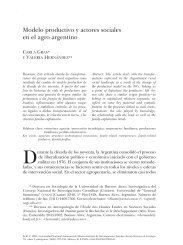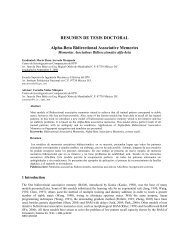P-T-t trajectory of metamorphic rocks from the central ... - SciELO
P-T-t trajectory of metamorphic rocks from the central ... - SciELO
P-T-t trajectory of metamorphic rocks from the central ... - SciELO
Create successful ePaper yourself
Turn your PDF publications into a flip-book with our unique Google optimized e-Paper software.
P-T-t <strong>trajectory</strong> <strong>of</strong> <strong>metamorphic</strong> <strong>rocks</strong>, Cusetpec Unit, Chiapas Massif Complex 253<br />
a)<br />
6.00<br />
Mole %<br />
4.00<br />
2.00<br />
Sps<br />
zone 1<br />
Grs<br />
zone 2<br />
zone 3<br />
0.00<br />
0 50 100 150 200<br />
220 240 260 280<br />
0.18<br />
0.16<br />
0.14 Mg#<br />
zone 1 zone 2<br />
0.12<br />
0.10<br />
zone 3<br />
0.08<br />
0 50 100 150 200 250<br />
Core<br />
Analysis<br />
Rim<br />
Qtz<br />
Zone 1<br />
Grt<br />
Zone2<br />
Zone 3<br />
b)<br />
Fe<br />
1mm<br />
Figure 6. a: Chemical composition <strong>of</strong> a pr<strong>of</strong>ile on garnet (core to rim) <strong>from</strong> <strong>the</strong> metapelite (sample JMC-68b). b: X-ray map <strong>of</strong> Fe on garnet <strong>from</strong> sample<br />
JMC-68b; light grey and white is rich in Fe (e.g., garnet), black is low in Fe (e.g., quartz). Note that poikiloblastic outer part <strong>of</strong> garnet coincides with<br />
increase <strong>of</strong> X Grs in <strong>the</strong> pr<strong>of</strong>ile and decrease in Mg# (a).<br />
hornblende are mainly apatite and titanite. Biotite is also<br />
present in this rock but it is almost completely retrogressed<br />
to chlorite.<br />
Plagioclase is subhedral, partially sericitized and<br />
displays undulose extinction. Although zoning is not petrographically<br />
visible, compositional pr<strong>of</strong>iles show oscillatory<br />
zoning with a slight increase <strong>of</strong> An content towards <strong>the</strong> rim.<br />
Fine-grained quartz crystals are smaller than o<strong>the</strong>r major<br />
constituents <strong>of</strong> this sample, and display incipient undulose<br />
extinction.<br />
A different generation <strong>of</strong> amphibole is greenish-blue<br />
to bluish-green hastingsite (Figure 7). These amphiboles<br />
rarely occur in <strong>the</strong> felsic matrix where <strong>the</strong>y are surrounded<br />
by plagioclase, in contact with retrogressed biotite, and as<br />
inclusions within garnet porphyroblasts. Probably, <strong>the</strong>se<br />
are prograde amphiboles that grew at <strong>the</strong> same time as <strong>the</strong><br />
porphyroblasts that engulf <strong>the</strong>m and rarely survived in <strong>the</strong><br />
matrix.<br />
The chemical composition <strong>of</strong> garnet is nearly homogeneous<br />
averaging Alm 57.0 –Prp 17.5 –Grs 17.5 –Sps 5.0. This<br />
feature indicates that garnet was probably rehomogenized<br />
during high-grade metamorphism and remained almost<br />
unaffected by later retrogression reactions. The peak mineral<br />
assemblage <strong>of</strong> this rock is hornblende + plagioclase +<br />
biotite + quartz.<br />
For <strong>the</strong> garnet-amphibolite, pressure conditions were<br />
estimated on <strong>the</strong> basis <strong>of</strong> <strong>the</strong> garnet + plagioclase + hornblende<br />
+ quartz assemblage (Kohn and Spear, 1990).


